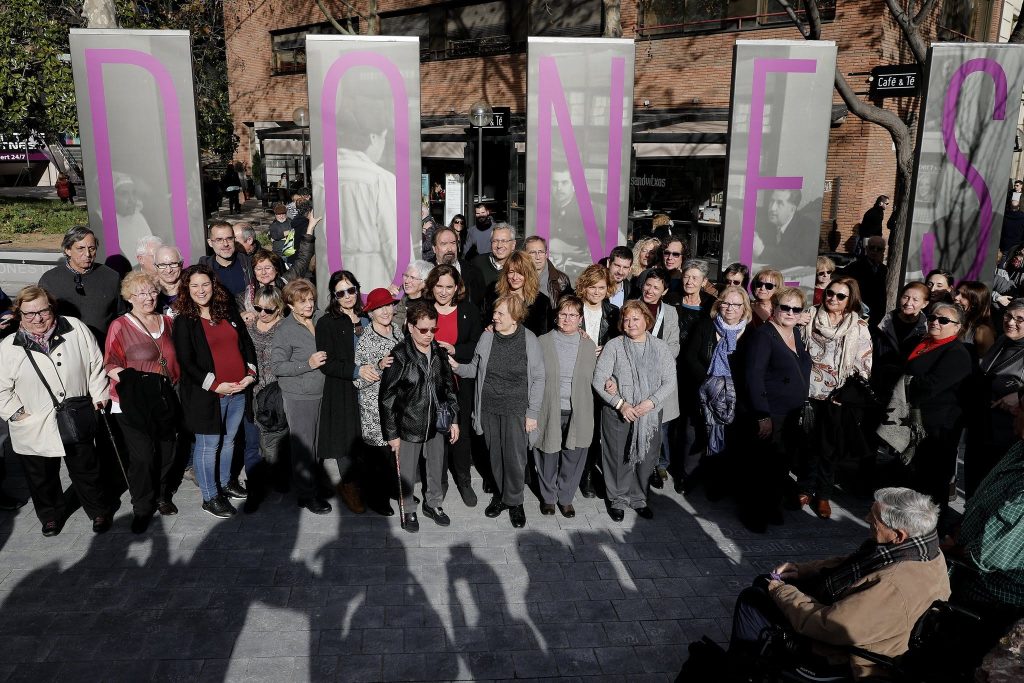Ricard Conesa Sánchez
Historian and project officer at the EUROM
Cover picture: The Memorial Site of the Les Corts’ Women Prison was inaugurated in 2019, after years of work and vindication by the Platform Future Monument Presó de dones de les Corts. Barcelona City Council.
On 14 December 2019, the monument dedicated to the now defunct women’s prison in the Barcelona neighbourhood of Les Corts was inaugurated. However, the monument does not claim to be “the memorial”. Instead, the memorial is everything that surrounds it. It is the place and the connection it has established with those who gather there on a regular basis to engage in a myriad of activities, as Jordi Guixé explains at the beginning of this book, the memorial is the process, and this process has been underway for some time now.
Fernando Hernández Holgado, historian at the Complutense University of Madrid (UCM), specialist in the field of women’s prisons under the Franco dictatorship, contributes a key chapter to the book, a chapter on the history of Les Corts women’s prison. From the prison’s predecessor (the Amalia Prison) to its closure in 1955, its demolition and the construction of a large shopping centre that opened in 1974 on the site of the former prison. The republican penitentiary reform, like so many others, was cut short by General Franco’s failed coup d’état and the outbreak of the Spanish Civil War in 1936, the same year that the prison first opened. Its beginnings were marked by the conflict in the Republican rearguard, with political prisoners of all kinds, from collaborators with the rebel side to anti-fascist victims of reprisals (anarchists and Trotskyists). Nevertheless, the situation would bear no comparison to the inhumane conditions that would be endured once Franco’s troops entered the city in 1939 – although the building was originally intended to accommodate around one hundred inmates, the peak of its occupancy was reached in August that same year, when it held 1,806 women and 43 children. Hernández painstakingly documents the type of prisoners incarcerated (political, common, foreign, those who were shot or died of illness), the cruel governance of the Daughters of Charity of Saint Vincent de Paul, and the incidents involving the prisoners’ resistance and self-organisation, as well as their escape attempts.

While Hernández Holgado presents the history of the women’s prison, Núria Ricart documents in her chapter the commemorative events and actions that have taken place in its memory. Professor of Fine Arts at the University of Barcelona, Ricart is a specialist in monuments and memorial spaces in the public space. This is also demonstrated in her recently published and outstanding book, Arte público y memoria. Lenguaje y transmisión en los monumentos a las víctimas [Public Art and Memory. Language and transmission in monuments to victims]. Since 2006, with the construction of the website www.presodelescorts.org by the Associació per la Cultura i la Memòria de Catalunya (ACME, Catalan Association for Culture and Memory) and the various unsuccessful attempts to mark the site – then unmarked and utterly invisible to the public – a process fraught with ups and downs began, with relentless efforts by different groups to keep the memory of the site alive. The shopping centre’s endeavour (with the support of the district) to appease the demands with a small, hidden plaque bearing an aseptic text in 2010 only further fuelled the flames and prompted the different groups involved to rally together even more. Seminars, activities, tours, performances, plays, documentary screenings, street marking, book presentations, commemorations every 8 March and 14 April… a broad process of citizen participation driven by the Plataforma Futuro Monumento Cárcel de Les Corts [Platform for the Future Monument to Les Corts Women’s Prison], founded in 2013, whose extensive programme of activities over the last few years is recorded on its blog. One of the high points was the installation of five monoliths in 2015, on the corner of Carrer Güell and Carrer Europa, where the monument would be inaugurated four years later: a redesign of the same space conceptualised by the team led by Núria Ricart herself, whose main focus would be six huge rocks of different origins from the peninsula, from the same place where many of the prisoners came from. Nonetheless, as the authors emphasise – and as the people who breathe life into it day after day confirm – this is not a monument marking the end, it is just another step, the memorial is the process, and this site remains – and must remain – an unfinished place.
RICART, Núria; GUIXÉ, Jordi; HERNÁNDEZ, Fernando (2022) Un lugar inacabado. Espacio de memoria, Monumento Cárcel de Mujeres de Les Corts. Valencia: Publicacions de la Universitat de València.RICART, Núria (2022) Arte público y memoria. Lenguaje y transmisión en los monumentos a las víctimas. Madrid: Catarata.
